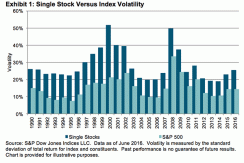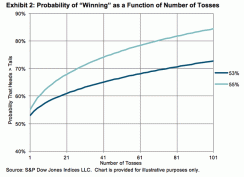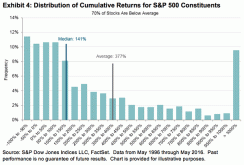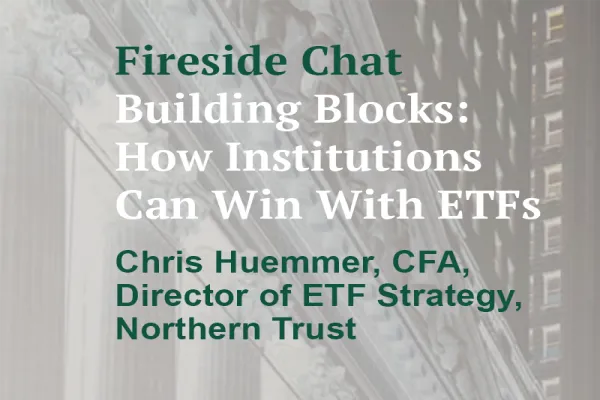“Our destiny is frequently met in the very paths we take to avoid it.”
-- Jean de La Fontaine – Fable 16
EXECUTIVE SUMMARY
In order to improve performance, advocates of active management have begun to argue that managers should focus exclusively on their best ideas, holding more concentrated portfolios of securities in which they have the highest confidence. In contrast, we argue that if it becomes popular, such “high conviction” investing is likely to:
- Increase risk,
- Make manager skill harder to detect,
- Raise asset owners’ costs, and
- Reduce the number of outperforming funds.
INTRODUCTION
Most active managers fail most of the time , at least if we regard their underperformance of passive benchmarks as indicative of failure. 1 This fact is so well known and widely demonstrated that even staunch advocates of active management acknowledge it. 2
What remains in dispute is what active managers should do to improve performance. Some argue that active management fails because it is not active enough. Active managers, it's said, are reluctant to deviate too much from a passive benchmark, knowing that their performance will be compared to it. They hold positions they don’t find especially attractive, simply to ensure they do not fall too far behind their peers. 3 The proposed remedy for such “overdiversified” portfolios is for managers “ to invest with high conviction, concentrating capital in the ideas they think are most likely to deliver strong long-term returns .” 4
| The argument for concentration is not new, but has found new motivations. |
Suppose that active portfolios become substantially more concentrated in each manager’s “best ideas.” What might the consequences be?
FIRST CONSEQUENCE: RISK IS LIKELY TO INCREASE
Other things equal, more securities mean more diversification. Exhibit 1 makes the point using the S&P 500, comparing the average volatility of the index to the average volatility of its components.

Between 1991 and May 2016, the average volatility of returns for the S&P 500 was 15%, while the average volatility of the index’s components was 28%. 7 The difference between one stock and 500 is an extreme case, but it serves to illustrate the obvious point: if the typical active manager owns 100 stocks now and converts to holding only 20 or so, the volatility of his portfolio will almost certainly increase.
In a world where all active managers concentrate their portfolios, fund owners face a dilemma. Asset owners have been known to grouse about the quality of active managers’ performance, but we have yet to identify one who has expressed a desire to hold a riskier portfolio. For the asset owner, then, there are two possible ways to manage the increase in portfolio risk.
| Manager aggressiveness forces asset owners to shift to a more conservative allocation, or to hire more managers. |
Alternatively, asset owners who wish to retain the proportion of their portfolio that is entrusted to active managers must hire more of them. Instead of using 20 mangers each with 100 stocks, for example, a fund might achieve the same risk profile by using 100 concentrated managers, each holding 20 stocks. As well as the considerable additional time and expense required on the part of the asset owner, 8 this produces a major logical inconsistency. In the name of conviction, managers who pick stocks are told to pick fewer stocks. As a consequence, asset owners who pick managers may be required to pick more managers.
Thus, as asset owners cast a wider net to mitigate the now-higher risk of their incumbent managers, the increased concentration of active funds might prove advantageous only to consultants supporting the expanded effort to secure sufficiently diversified active exposures.
SECOND CONSEQUENCE: MANAGEMENT SKILL MAY BE HARDER TO DETECT, AND LESS LIKELY TO MATTER
Some managers may be skillful, but none are infallible. A manager who is skillful but not infallible will benefit from having more, rather than fewer, opportunities to display his skill. A useful analogy is to the house in a casino: on any given spin of the roulette wheel, the house has a small likelihood of winning; over thousands of spins, the house’s advantage is overwhelming.
Exhibit 2 illustrates the concept. In a coin-flipping game with a biased coin, we win the game if more than one-half of our tosses come up heads. In one case, the coin has a 53% chance of heads and in the other, the coin has a 55% chance of heads. As the exhibit shows, the chance of winning grows as the number of tosses rises and, for any number of tosses, the chance of winning is higher with the more favorable coin. However, if the number of tosses varies between the two coins, at some point, it is preferable to have a worse coin and more tosses .

| The more picks a manager makes, the more likely his skill dominates his luck. |
A manager with below-average skill, in this analogy, is also flipping a biased coin, but his coin has less than a 50% chance of coming up heads. Ironically, this manager has a better chance of winning the game the smaller the number of tosses (just as a skilled manager has a better chance the more he tosses). Concentrating portfolios, in other words, makes it more likely that good managers will look bad, more likely that bad managers will look good, and more likely that asset owners’ decisions will be informed by luck rather than skill.
THIRD CONSEQUENCE: TRADING COSTS MAY RISE
It is not certain whether the proponents of higher concentration would prefer to see smaller individual fund sizes, or whether their advocacy of concentration presumes a material increase in holding period and a considerable investment in reducing execution costs. However, if fund sizes do not materially decrease and funds don’t rebalance less frequently, it is likely that trading costs will increase massively with higher concentration. This is because—at higher concentration— both fund turnover and cost-per-trade are likely to increase.
| It’s difficult to escape the conclusion that turnover will rise as concentration rises. |
Consider the turnover required for each manager, assuming that their portfolios are equally weighted and that they both rebalance once per quarter:
- The concentrated manager holds the top 10% of the universe; his turnover will therefore be X%.
- The “diversified” manager holds everything but the bottom 10%. There is X% turnover in the stocks he doesn’t own, which leads to a turnover of (X/9)% in those he does. 9
| Higher trade sizes complete a double blow to returns. |
Thus, higher concentration can deliver a double blow to returns: higher turnover and a higher unit cost of execution.
FOURTH CONSEQUENCE: THE PROBABILITY OF ACTIVE UNDERPERFORMANCE MAY INCREASE
Imagine a market with five (equally weighted) stocks, whose performance in a given year is shown in Exhibit 3. The market’s return is 18%, driven by the outstanding return on stock E. 11
| We might suspect that there is a natural tendency toward a right skew in equities—after all, a stock can only go down by 100%, while it can appreciate by more than that. |
Of course this is a stylized example, which only “worked” because our hypothetical returns were skewed to the right; formally, the average return was greater than the median return. A different return pattern among the individual stocks would have produced a different result at the portfolio level—so the usefulness of our example hinges on an empirical question: to what degree are real-life stock returns skewed to the right?
We might suspect that there is a natural tendency toward a right skew in equities—after all, a stock can only go down by 100%, while it can appreciate by more than that. 12 This intuition is confirmed by Exhibit 4, which plots the distribution of cumulative returns for the constituent stocks of the S&P 500 for the 20 years ended May 2016. The median return was 141%, far less than the average of 377%.

Note that the positive skew in equity returns demonstrated by Exhibit 4 is not simply a long-term phenomenon: in the 25 years between 1991 and 2015, the average S&P 500 stock outperformed the median 21 times.sup>13
| It is more sensible to focus on excluding the least desirable stocks, rather than picking the most desirable—the opposite of what a concentrated portfolio will do. |
THE PRESUMPTION OF SKILL
The four consequences we’ve suggested—higher risk, greater dominance of luck over skill, higher costs, and fewer outperforming funds—are likely and logical outcomes of higher concentration. Notice that all of them apply even for active managers with genuine stock selection skill. Once we consider the scarcity and nature of skill, however, the case against greater concentration becomes even more compelling.
The advocates of portfolio concentration assume that it will improve performance, and there is at least some evidence that funds showing greater conviction in their portfolios, as measured by active share, have obtained better results. 14 The evidence is not undisputed, 15 and in any event it’s important to note that the relationship between good performance and high active share cannot be causal . If it were, an underperforming manager could sell half the names in his portfolio (chosen at random) and improve his results. Culling the names in this way will surely raise active share, and yet no reasonable observer would argue that it will have anything other than a random effect on performance.
| The evidence that manager skill is ephemeral is strong. |
On the contrary, the evidence that manager skill is ephemeral (indeed chimerical) is strong.
- The professionalization of the investment management business in the decades after World War II meant that professional investors were, and still are, competing against rivals as skilled as themselves. This means that the only source of excess return, or positive alpha, for the winners is the negative alpha of the losers, so that in aggregate, active management must be a zero-sum game. 17
- Because passive investors simply own a slice of the market, their aggregate portfolio and the aggregate portfolio of all active managers will be the same. Since passive investment is intrinsically cheaper than active management, “after costs, the return on the average actively managed dollar will be less than the return on the average passively managed dollar.” 18
- In support of these conceptual points, the empirical evidence is unequivocal. Most active managers underperform benchmarks appropriate to their investment style, 19 and the comparisons become more arduous as the timeframe for evaluation lengthens. Moreover, there is scant evidence of the persistence of above-average performance. A manager is no more likely to be above average two years in a row than he is to toss a fair coin and get two consecutive heads. 20
Active management is intrinsically difficult. The tendency of most active managers to underperform passive benchmarks has, if anything, grown in recent years, and this has led some observers to advocate that active managers should become more aggressive and operate more concentrated portfolios. A manager who chooses to concentrate can only hope to improve his results if he has a particular type of skill, and this skill must be quite rare. If this were not so, active funds would not be facing a performance challenge in the first place.
| A manager who chooses to concentrate can only hope to improve his results if he has a particular type of skill, and this skill must be quite rare. |
Skillful managers sometimes underperform; unskillful managers sometimes outperform. The challenge for an asset owner is to distinguish genuine skill from good luck. The challenge for a manager with genuine skill is to demonstrate that skill to his clients. The challenge for a manager without genuine skill is to obscure his inadequacy. Concentrated portfolios will make the first two tasks harder and the third easier.
NOTES
- Soe, Aye M., “ SPIVA U.S. Scorecard ,” Year-End 2015; Johnson, Ben and Alex Bryan, “ Morningstar’s Active/Passive Barometer ,” April 2016.
- Willmer, Sabrina and Erik Schatzker, “ Active Firms May Need to Shrink Assets by Up to $10 Trillion ,”, June 7, 2016.
- Clemons, G. Scott, “ Passive Lessons for Active Investors ,” Brown Brothers Harriman Quarterly Investment Journal , Quarter 2, 2016.
- Kraus, Peter S., “ Why the era of the ‘closet benchmarker’ has to end ,” Financial Times , May 17, 2016. See also Sebastian, Mike and Sudhakar Attaluri, “ Conviction in Equity Investing ,” The Journal of Portfolio Management , Summer 2014,
- Petajisto, Antti, “ Active Share and Mutual Fund Performance ,” Financial Analysts Journal , July/August 2013, pp. 73-93.
- Edwards, Tim and Craig J. Lazzara, “ Dispersion: Measuring Market Opportunity ,” December 2013; Lazzara, Craig, “ The Value of Skill ,” March 20, 2015.
- The difference between an index’s volatility and the volatility of its average component is summarized by the index’s dispersion. See Edwards, Tim and Craig J. Lazzara, “ At the Intersection of Diversification, Volatility and Correlation ,” April 2014.
- The evidence indicates that the difficulty of manager selection grows as fund owners try to select more managers. See Ferri, Richard A. and Alex C. Benke, “ A Case for Index Fund Portfolios ,” June 2013.
- Turnover of the bottom decile is X%, so as a fraction of the universe it is 0.1*X. The manager owns 90% of the universe. 0.1*X/0.9 = X/9.
- We ignore here the possible impact of a shifting active management zeitgeist. In a world of increased concentration and emphasis on using only a manager’s “best ideas,” our guess is that the managers would “try harder” to demonstrate their value and that turnover would increase for that reason as well.
- This example is drawn from Heaton, J.B., Nick Polson, and Jan Hendrik Witte, “ Why Indexing Works ,” October 2015.
- Conversely, a left skew seems more likely in bonds, where potential outcomes are limited to either a return matching the yield to maturity, or a significant loss in case of default.
- We find similar results in other markets. The average stock outperformed the median 12 of the last 16 years for the S&P/TSX Composite , 19 of the last 20 years for the S&P/TOPIX 150 , 8 of the last 15 years for the S&P/ASX 200 , and 19 out of 19 years for the S&P Pan Asia ex-Japan & Taiwan BMI .
- Petajisto, op. cit.
- Frazzini, Andrea, Jacques Friedman, and Lukasz Pomorski, “ Deactivating Active Share ,” Financial Analysts Journal , March/April 2016, pp. 14-21.
- Specifically, they must be sufficiently distinguished to compensate for higher risk, higher trading costs, and higher influence from chance effects.
- Ellis, Charles D., “ The Loser’s Game ,” Financial Analysts Journal , July/August 1975, pp. 19-26.
- Sharpe, William F., “ The Arithmetic of Active Management ,” Financial Analysts Journal , January/February 1991, pp. 7-9.
- Soe, Aye, op. cit. N.B. This work uses capitalization-weighted indices as benchmarks. See also Lazzara, Craig, “ Even Worse Than You Think ,” June 19, 2014.
- Soe, Aye M., “ Does Past Performance Matter? The Persistence Scorecard ,” January 2016.
ABOUT S&P DOW JONES INDICES
S&P Dow Jones Indices LLC, a division of S&P Global, is the world’s largest, global resource for index-based concepts, data and research. Home to iconic financial market indicators, such as the S&P 500® and the Dow Jones Industrial Average®, S&P Dow Jones Indices LLC has over 115 years of experience constructing innovative and transparent solutions that fulfill the needs of institutional and retail investors. More assets are invested in products based upon our indices than any other provider in the world. With over 1,000,000 indices covering a wide range of assets classes across the globe, S&P Dow Jones Indices LLC defines the way investors measure and trade the markets. To learn more about our company, please visit www.spdji.com .
GENERAL DISCLAIMER
© 2016 S&P Dow Jones Indices LLC, a division of S&P Global. All rights reserved. S&P, SPDR and S&P 500 are registered trademarks of Standard & Poor’s Financial Services LLC, a division of S&P Global (“S&P”). DOW JONES is a registered trademark of Dow Jones Trademark Holdings LLC (“Dow Jones”). These trademarks together with others have been licensed to S&P Dow Jones Indices LLC. Redistribution, reproduction and/or photocopying in whole or in part are prohibited without written permission. This document does not constitute an offer of services in jurisdictions where S&P Dow Jones Indices LLC, Dow Jones, S&P or their respective affiliates (collectively “S&P Dow Jones Indices”) do not have the necessary licenses. All information provided by S&P Dow Jones Indices is impersonal and not tailored to the needs of any person, entity or group of persons. S&P Dow Jones Indices receives compensation in connection with licensing its indices to third parties. Past performance of an index is not a guarantee of future results.
It is not possible to invest directly in an index. Exposure to an asset class represented by an index is available through investable instruments based on that index. S&P Dow Jones Indices does not sponsor, endorse, sell, promote or manage any investment fund or other investment vehicle that is offered by third parties and that seeks to provide an investment return based on the performance of any index. S&P Dow Jones Indices makes no assurance that investment products based on the index will accurately track index performance or provide positive investment returns. S&P Dow Jones Indices LLC is not an investment advisor, and S&P Dow Jones Indices makes no representation regarding the advisability of investing in any such investment fund or other investment vehicle. A decision to invest in any such investment fund or other investment vehicle should not be made in reliance on any of the statements set forth in this document. Prospective investors are advised to make an investment in any such fund or other vehicle only after carefully considering the risks associated with investing in such funds, as detailed in an offering memorandum or similar document that is prepared by or on behalf of the issuer of the investment fund or other investment product or vehicle. S&P Dow Jones Indices LLC is not a tax advisor. A tax advisor should be consulted to evaluate the impact of any tax-exempt securities on portfolios and the tax consequences of making any particular investment decision. Inclusion of a security within an index is not a recommendation by S&P Dow Jones Indices to buy, sell, or hold such security, nor is it considered to be investment advice. Closing prices for S&P Dow Jones Indices’ US benchmark indices are calculated by S&P Dow Jones Indices based on the closing price of the individual constituents of the index as set by their primary exchange. Closing prices are received by S&P Dow Jones Indices from one of its third party vendors and verified by comparing them with prices from an alternative vendor. The vendors receive the closing price from the primary exchanges. Real-time intraday prices are calculated similarly without a second verification.
These materials have been prepared solely for informational purposes based upon information generally available to the public and from sources believed to be reliable. No content contained in these materials (including index data, ratings, credit-related analyses and data, research, valuations, model, software or other application or output therefrom) or any part thereof (“Content”) may be modified, reverse-engineered, reproduced or distributed in any form or by any means, or stored in a database or retrieval system, without the prior written permission of S&P Dow Jones Indices. The Content shall not be used for any unlawful or unauthorized purposes. S&P Dow Jones Indices and its third-party data providers and licensors (collectively “S&P Dow Jones Indices Parties”) do not guarantee the accuracy, completeness, timeliness or availability of the Content. S&P Dow Jones Indices Parties are not responsible for any errors or omissions, regardless of the cause, for the results obtained from the use of the Content. THE CONTENT IS PROVIDED ON AN “AS IS” BASIS. S&P DOW JONES INDICES PARTIES DISCLAIM ANY AND ALL EXPRESS OR IMPLIED WARRANTIES, INCLUDING, BUT NOT LIMITED TO, ANY WARRANTIES OF MERCHANTABILITY OR FITNESS FOR A PARTICULAR PURPOSE OR USE, FREEDOM FROM ERRORS OR DEFECTS. In no event shall S&P Dow Jones Indices Parties be liable to any party for any direct, indirect, incidental, exemplary, compensatory, punitive, special or consequential damages, costs, expenses, legal fees, or losses (including, without limitation, lost income or lost profits and opportunity costs) in connection with any use of the Content even if advised of the possibility of such damages.
Credit-related information and other analyses, including ratings, research and valuations are generally provided by licensors and/or affiliates of S&P Dow Jones Indices, including but not limited to S&P Global’s other divisions such as Standard & Poor’s Financial Services LLC and S&P Capital IQ LLC. Any credit-related information and other related analyses and statements in the Content are statements of opinion as of the date they are expressed and not statements of fact. Any opinion, analyses and rating acknowledgement decisions are not recommendations to purchase, hold, or sell any securities or to make any investment decisions, and do not address the suitability of any security. S&P Dow Jones Indices does not assume any obligation to update the Content following publication in any form or format. The Content should not be relied on and is not a substitute for the skill, judgment and experience of the user, its management, employees, advisors and/or clients when making investment and other business decisions. S&P Dow Jones Indices LLC does not act as a fiduciary or an investment advisor. While S&P Dow Jones Indices has obtained information from sources they believe to be reliable, S&P Dow Jones Indices does not perform an audit or undertake any duty of due diligence or independent verification of any information it receives.
To the extent that regulatory authorities allow a rating agency to acknowledge in one jurisdiction a rating issued in another jurisdiction for certain regulatory purposes, S&P Global Ratings Services reserves the right to assign, withdraw or suspend such acknowledgement at any time and in its sole discretion. S&P Dow Jones Indices, including S&P Global Ratings Services, disclaim any duty whatsoever arising out of the assignment, withdrawal or suspension of an acknowledgement as well as any liability for any damage alleged to have been suffered on account thereof.
Affiliates of S&P Dow Jones Indices LLC, including S&P Global Ratings Services, may receive compensation for its ratings and certain credit-related analyses, normally from issuers or underwriters of securities or from obligors. Such affiliates of S&P Dow Jones Indices LLC, including S&P Global Ratings Services, reserve the right to disseminate its opinions and analyses. Public ratings and analyses from S&P Global Ratings Services are made available on its Web sites, www.standardandpoors.com (free of charge), and www.ratingsdirect.com and www.globalcreditportal.com (subscription), and may be distributed through other means, including via S&P Global Rating Services publications and third-party redistributors. Additional information about our ratings fees is available at www.standardandpoors.com/usratingsfees .
S&P Global keeps certain activities of its various divisions and business units separate from each other in order to preserve the independence and objectivity of their respective activities. As a result, certain divisions and business units of S&P Global may have information that is not available to other business units. S&P Global has established policies and procedures to maintain the confidentiality of certain non-public information received in connection with each analytical process.
By choosing to follow the links in footnotes 1, 2, 3, 4, 5, 8, 11, 15, 18, and 19, you understand you will be directed to a third party’s web site, which may contain different terms and conditions than the ones governing the web site of S&P Dow Jones Indices (S&P DJI). S&P DJI makes no representations or warranties of any kind, express or implied, regarding the completeness, accuracy, reliability, suitability or availability of information on a third party site, including any products or services mentioned therein, for any purpose. S&P DJI does not sponsor, endorse, sell or promote any investment fund or product, or make investment recommendations.





